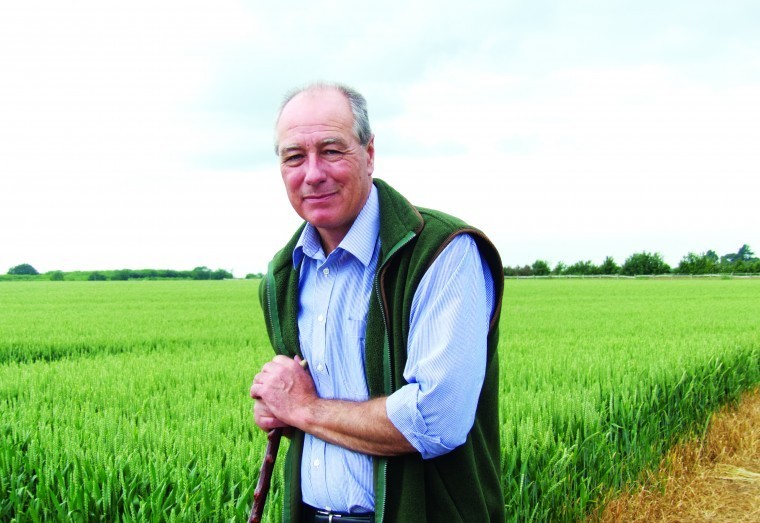We have measured more than three inches of rain in the first three weeks of August which means the soil is certainly wet to the extent that running a Challenger and Solo became impossible for a few days.
So to the harvest results so far. The early first wheats were as they looked – very good. Yields for Claire following oilseed rape and beans were between 10.4 and 11.25 tonnes a hectare. Most of these were cut before the storm and had good hagberg, proteins and bushel weights of 78 kilograms a hectolitre. The variety Invicta on heavy ground with water logging problems over the winter yielded 8.5t/ha. This was very similar to the situation we found with oilseed rape where poor ground and winter conditions robbed yield severely this year. I have mentioned blackgrass and the struggle throughout the year and one thing a weighbridge does is quantify yield losses. Serious infestations of blackgrass have taken yield down by 25 to 50% on the fields where we have failed to get control.
Second wheats have been a different story. All were drilled behind the plough and we have had far better blackgrass control – and in some cases better than the first wheats that preceded them. All had Lattitude seed dressing to combat take all with mixed success. Where there were problems with lime or poor soil conditions, take all did appear but on most fields in general take all control was good. Yields as ever were variable and the take all fields did struggle to reach 7.5t/ha but on the majority of fields were nearer 10t/ha and on a Yield Enhancement Network trial plot of Relay, there was a weighed yield of 11.69t/ha with the rest of the block of 40ha averaging 10t/ha. So overall this was a wheat year with yields back to the levels we would have regularly expected some four years ago before we experienced the extremes of weather that we have had in the South East.
However that is not the whole story and when the weather broke we did still have the 1,500 acres of wheat to cut and as I write the weather has settled and we are making good progress. The value of growth regulators is underlined by the damage the wind did to heavy crops and some are laid badly although not completely on the ground. The yields and indeed the quality are still there but it is taking longer to cut and is wetter than one would like but at least the isolated showers that delivered five to 10 millimetres in minutes have stopped and we are making good progress again.
The very wet soil has made drilling oilseed hard work and while the intention was to drill the crop rather than broadcast behind the Solo that has proved very difficult. When cultivating ground it has come up wet and then got a good deal wetter with the first shower so we abandoned the principle and pragmatism has taken over with a return to broadcasting behind the Solo, rolling as soon as possible with a half rate of slug pellets and pre-emergence sprays. Looking at volunteers on rape fields while there is slug damage, there is remarkably little cabbage stem flea beetle damage this year which hopefully will follow through on the seeded crops.
I do still drive a combine and on the whole it is a job I enjoy and certainly it is where you can see results of all your mistakes in the last 12 months which may or may not be a good thing. It also allows you to see a variety of wildlife as you clear the fields and we have seen some good broods of English partridge and pheasants. One of the other very noticeable birds is the buzzard. Until five years ago we simply did not see this bird in Kent but it has spread across from the South West and now is even nesting close to urban areas. I have watched the adults teach their offspring to hunt across stubbles as we cut the wheat. A lot of the time they are catching mice and voles and for a very large bird are surprisingly agile and adept.
However they also hunt young pheasant and partridge whether wild or released. I have yet to see them catch English partridge probably because the opportunity is limited for them to succeed or for me to see the act but they certainly do hunt and harass them and young pheasants are certainly no match for them when they first lose the cover of wheat crops. The buzzard increasingly looks like a bird which is going to be a serious predator for our wildlife with no control on numbers which is the same story for so many of our protected species.




